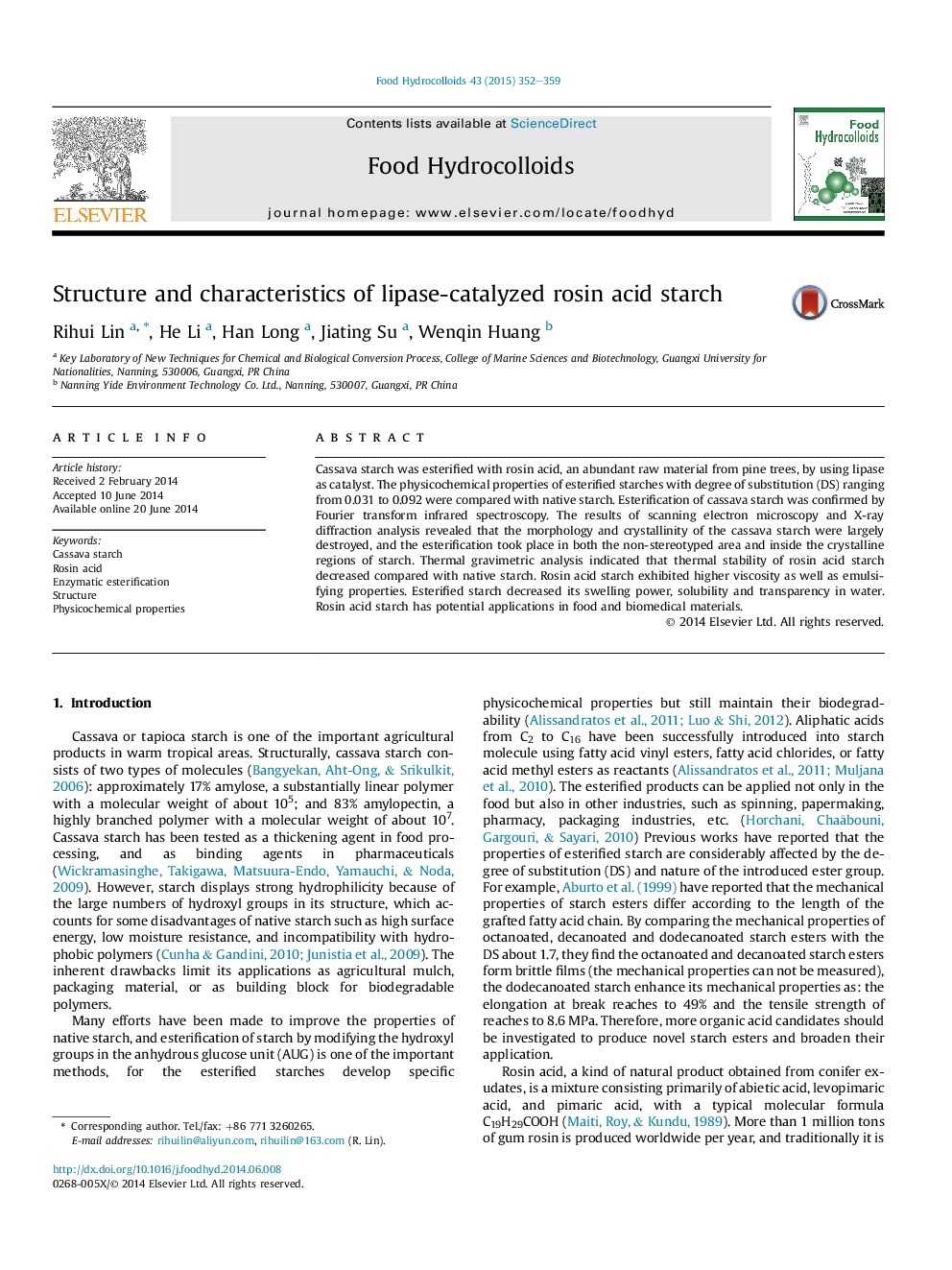| Article ID | Journal | Published Year | Pages | File Type |
|---|---|---|---|---|
| 604662 | Food Hydrocolloids | 2015 | 8 Pages |
•Rosin acid is an important natural product and finds new applications in polymeric materials.•Enzymatic synthesis of rosin acid starch was carried out under mild conditions.•FTIR, XRD and SEM revealed structural changes between native starch and rosin acid starch.•The hydrophobicity, viscosity properties and emulsifying properties of the rosin acid starch were significantly improved.
Cassava starch was esterified with rosin acid, an abundant raw material from pine trees, by using lipase as catalyst. The physicochemical properties of esterified starches with degree of substitution (DS) ranging from 0.031 to 0.092 were compared with native starch. Esterification of cassava starch was confirmed by Fourier transform infrared spectroscopy. The results of scanning electron microscopy and X-ray diffraction analysis revealed that the morphology and crystallinity of the cassava starch were largely destroyed, and the esterification took place in both the non-stereotyped area and inside the crystalline regions of starch. Thermal gravimetric analysis indicated that thermal stability of rosin acid starch decreased compared with native starch. Rosin acid starch exhibited higher viscosity as well as emulsifying properties. Esterified starch decreased its swelling power, solubility and transparency in water. Rosin acid starch has potential applications in food and biomedical materials.
Graphical abstractFigure optionsDownload full-size imageDownload as PowerPoint slide
